|
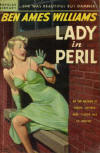 The
goal of the Bookscans Project is to provide a visual catalog of ALL vintage
American paperbacks (for my purposes, this is roughly the first 40 years
of mass market paperbacks). Collectors will probably declare this goal so
lofty as to be impossible. They're right, of course, but even at its
conception, Bookscans was the largest site of its type in the world. With the help of
others, we just might come close to making it complete; and it'll be
totally within the public domain (i.e., its free). The
goal of the Bookscans Project is to provide a visual catalog of ALL vintage
American paperbacks (for my purposes, this is roughly the first 40 years
of mass market paperbacks). Collectors will probably declare this goal so
lofty as to be impossible. They're right, of course, but even at its
conception, Bookscans was the largest site of its type in the world. With the help of
others, we just might come close to making it complete; and it'll be
totally within the public domain (i.e., its free).
The scans are not meant to be of superior quality. You
won't want to make posters or 8X10 glossies from these (there are other
commercial sites featuring the more exotic covers for that purpose). It
simply lets the collector see the evolution of cover art by publisher, or
see what covers look like in the event he or she is searching for a
specific book.
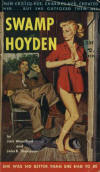
Frequently Asked
Questions
Here are some FAQ's about the scans
contained in the database:
"Have you altered
the scans?"
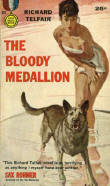 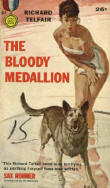
In some cases, yes. Vintage paperbacks
have often gone
through life as scratch pads, coffee cup coasters, or a myriad of other
indignant professions. If I have encountered a book whose image I can
alter slightly in order to restore it to its originally intended
appearance, I have done so. See the images to the right as an example. I
do not "fix" contributed scans.
"What are the little
letters at the end of some of the database entries?"
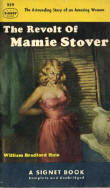 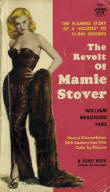 The
letters indicate printing numbers. You won't notice these unless you click
on a thumbnail and see it in the picture's web address. I've used a small letter "b" to show
that the image is of a second printing, "c" for a third, "d" a fourth,
etc. Printing numbers can be significant to collectors, especially
when that publisher made changes to the cover. Pocket Book #1, for
example, went through more than 30 printings, and the cover art changed
more than once. The
letters indicate printing numbers. You won't notice these unless you click
on a thumbnail and see it in the picture's web address. I've used a small letter "b" to show
that the image is of a second printing, "c" for a third, "d" a fourth,
etc. Printing numbers can be significant to collectors, especially
when that publisher made changes to the cover. Pocket Book #1, for
example, went through more than 30 printings, and the cover art changed
more than once.
Since the BookScans site is the first source that is
designed to show cover art by publisher, I HAVE NO WAY OF DETERMINING WHAT
A FIRST PRINTING LOOKS LIKE UNLESS I OWN THE BOOK. So if I scan a second
printing, I'll give it a "b" until I'm sure that it's exactly the same as
the first. In the pictures shown (Signet 959), one is a second printing
(0959b) and one is a 14th (0959n). The computer sorts letters much better
than it does numbers. I've done this mostly with the Pocket Books,
Penguins and Signets. If there is no letter, it's a first printing.
"Do any of the books
appear in the database more than once?"
In some cases, yes. Many of the images in the "Artistic Interpretations,"
"Twins" and the "Special Groups" folders also appear
in their own
Publishers' Folders. The duplicates are
NOT included in the total number of scans indicated on the Home Page.
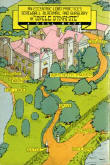
"Are there really THAT
many books in the database?"
You should realize that some of the images in the
database are of Back Cover artwork that I considered significant.
The first thousand Dell images, for example, includes almost 500 back
cover images.
"Who the heck are you?"
I'm Bruce Black. I live in Corvallis,
Oregon, and I'm always happy to hear from other members of the Vintage
Paperback community.
|